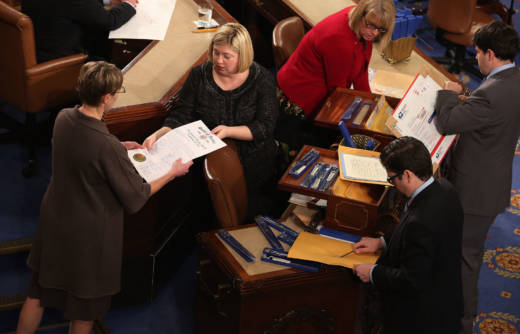California is among the 29 states and the District of Columbia that require electors to vote for the candidate who won the state’s popular vote.
Generally electors are party loyalists who tend to support the winning candidate. Still, state election code does compel them to vote for the popular vote winner. It reads: “The electors, when convened, if both candidates are alive, shall vote by ballot for that person for President and that person for Vice President of the United States, who are, respectively, the candidates of the political party which they represent.” Since the electors all represent the winning party, this ensures the candidate who won the popular vote will receive all the electoral votes.
This year a California elector challenged the law requiring electors to follow the popular vote. A federal judge ruled against him and the elector has appealed. The legal challenge has been called a last-ditch effort to block Donald Trump from getting enough electoral votes to win the presidency.
How do electors cast their votes?
The state code requires the designated electors to meet in Sacramento, “at 2 o clock in the afternoon on the first Monday after the second Wednesday in December next following their election.”
On that day the electors will meet in the state Assembly chambers to formally cast their votes. They will be sworn into office and presented with two simple ballots, one for president and one for vice president. The electors must simply vote yes or no for the Democratic nominees. There are no other candidates on the ballot and no space to write in a candidate. The votes will be tallied in the meeting.
You can watch the vote live online at 2 p.m. Monday. The votes from all of the country’s electors will be counted in a joint session of Congress on Jan. 6.

